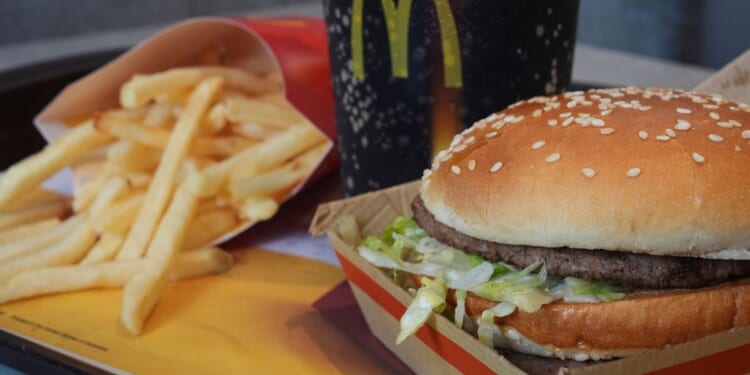
Food stamps are supposed to be spent on nutritious meals — but nine states currently allow them to be spent at fast food restaurants like McDonald’s.
Sen. Joni Ernst, Iowa Republican, says that should change.
She stated that more than half a billion dollars in Supplemental Nutrition Assistance Program funds were spent at fast food establishments from June 2023 through May 2025.
“Let’s be honest, fast food is delicious and convenient, especially when you’re hungry and in a hurry. But let’s not forget, the ’N’ in SNAP stands for ’Nutrition,’ and we all know fast food isn’t exactly nutritious,” she said.
Ms. Ernst highlighted ads from fast food franchises encouraging the use of electronic benefit transfer cards, which are how food stamp benefits are now distributed. They included Subway, Pizza Hut, Taco Bell, KFC, Denny’s, Jack in the Box, Burger King and, of course, McDonald’s.
Food stamps took center stage earlier this month when the Trump administration said it had to stop payments amid the government shutdown. The government said since Congress hadn’t approved any new money, SNAP no longer existed.
A federal judge disagreed and ordered the government first to tap a contingency fund to make partial payments, then to siphon money from the school lunch program to make full payments.
The Supreme Court put that second ruling on hold, and then Congress swooped in with a new funding bill, restarting the program in full.
About 42 million Americans use food stamps and the government spent about $100 billion on the program in 2024.
Supermarkets make up most of SNAP spending, at 74% of all redemptions, according to a Pew analysis of data from the Agriculture Department, which runs the program.
Online retailers such as Amazon account for 10%, and convenience stores account for 5%, Pew said.
Food stamps are not supposed to be used on alcohol or tobacco. They’re also generally not supposed to be used to buy hot prepared foods at stores.
A 2016 Agriculture Department study found 40% of food stamp spending went to staples such as meat, fruits, vegetables, milk, eggs and bread. Another 40% went to cereal, prepared foods, rice and beans.
And the remaining 20% went to sweets, salty snacks or sugary drinks.
Indeed, soft drinks topped the list of commodities by expenditure for SNAP households, accounting for 5% of spending. Milk topped the list for non-SNAP homes, but soft drinks ranked second at 4% of total spending.
Candy ranked 11th on the expenditure list for SNAP homes, but was 8th on the list for non-SNAP households.
The Restaurant Meals Program, which allows benefits to be spent at fast-food restaurants, began in 1978. The idea was for older or disabled beneficiaries who might lack the ability to use a kitchen to be able to get prepared meals.
In the 1990s, it was expanded to include the homeless, who lack access to a kitchen.
Ms. Ernst said she’s introducing legislation to stop chain restaurants from accepting SNAP benefits.
“While franchises like McDonald’s are making McMillions off of SNAP RMP, allowing fast food to be purchased with food stamps is an idea that is a few fries short of a Happy Meal,” she said.














